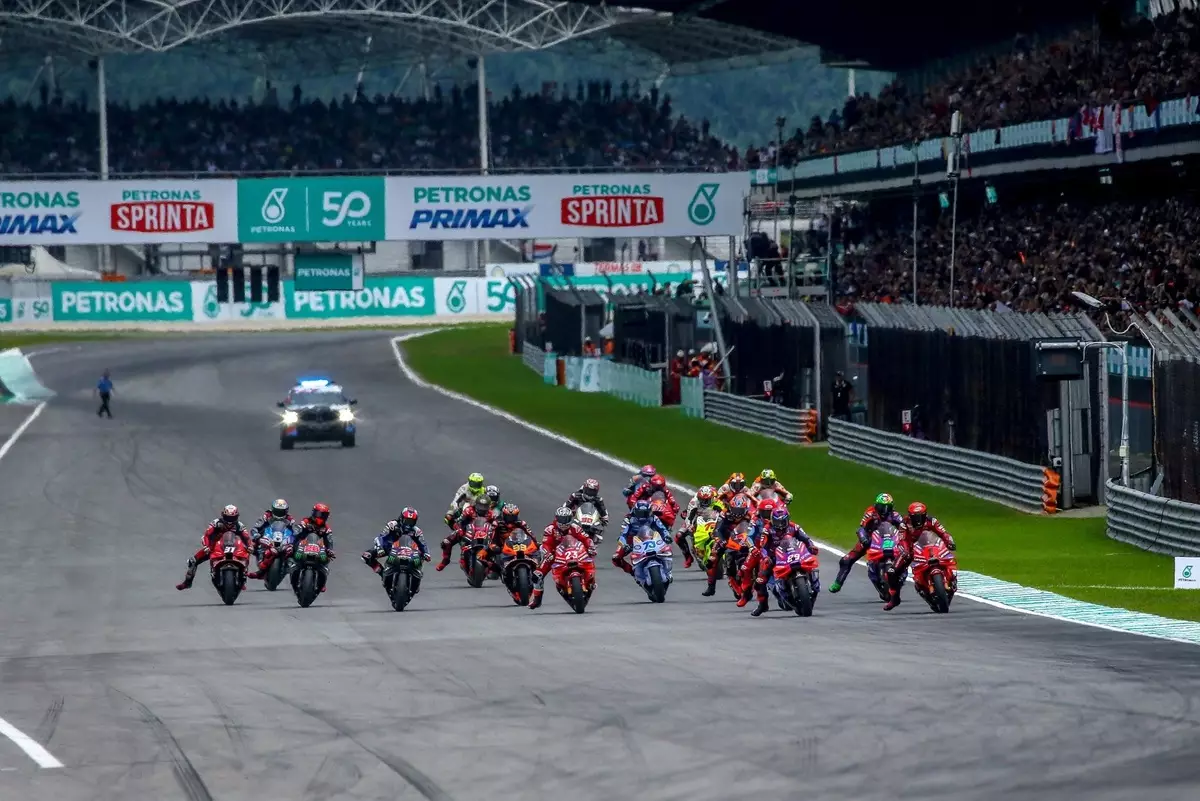The introduction of sprint races in the MotoGP series during the 2023 season has sparked significant debate among fans, teams, and former management alike. Moving away from the traditional weekend format that has characterized the championship for decades, the new structure aims to inject excitement into race weekends. Nevertheless, the implications of this change have led to critical discussions regarding its impact on qualifying and the overall workload of teams. This article dives into the complexity of the situation, particularly taking into account insights from former KTM team manager Francesco Guidotti.
When it comes to the rigorous environment of MotoGP, team dynamics play an essential role in performance and strategy. The addition of sprint races has shifted the focus significantly, with many claiming that the spotlight is now more on the sprints than the traditional qualifications. This new format tends to intensify the pressure on teams during the weekend, particularly on Fridays and Saturdays, where critical sessions occur in close succession. The situation becomes even more complicated for riders, who must balance the physical and mental toll of back-to-back sessions, resulting in an exhausting experience for all involved.
Guidotti voices a prevalent concern echoed by many within the paddock. The exhaustive nature of the current weekend structure has decreased the effectiveness of the qualifying sessions. His proposal to utilize sprint race results to decide the starting grid for the main race seeks to mitigate some of this pressure while simultaneously revamping traditional practices. This approach, reminiscent of the World Superbike Championship’s qualifying strategy, provides an intriguing framework for enhancing overall competition while attracting attention back to the important elements of qualifying.
One of the pivotal points raised by Guidotti is the diminished importance of qualifying under the current framework. Historically, qualifying sessions were the centerpiece of any race weekend, with strategies meticulously planned from Friday to Sunday. However, with the introduction of the sprint race closely tied to qualifying, the narrative has shifted. Guidotti argues that, despite the demand for high performance in qualifying, the media and audience engagement have not kept pace.
As he articulates, “Currently, qualifying is only important for two hours.” This statement reveals the crux of the issue—while riders once focused on not only achieving a solid qualifying position but also on building momentum for the main race, the sprint now steals that narrative. The focus has shifted to delivering a strong performance in the sprint event, overshadowing the qualifications themselves. Such a reduction in the desirability of qualifying challenges the very fabric of the competition, leading to calls for a reevaluation of how qualifications can be restructured to regain their traditional significance.
Another noteworthy criticism of the new format lies in its inequality regarding competitor performance. Riders outside of the top nine find themselves in a frustrating position where the sprint result has little impact on their starting position for the main race. Guidotti’s critical observation that it makes “no difference” whether a rider finishes P12 or P15 resonates with fans who cherish competitiveness across the leaderboard. The implication here is that the current system may inadvertently encourage complacency among riders, particularly those in mid to lower standings.
If the sprint race were utilized as a precursor for the main race grid, a culture of competitive risk would likely emerge, prompting riders to push harder during sprints. Consequently, this would lead to a more thrilling racing environment, where every position, regardless of a rider’s standing, becomes significant. Rather than seeing risk as a detrimental factor, teams and riders might embrace calculated aggression, knowing that every race counts towards their positioning in the main event.
As MotoGP continues to evolve, it is imperative that stakeholders remain engaged in constructive dialogue regarding the sport’s formats. The observations made by Francesco Guidotti emphasize the need for a thoughtful reassessment of both qualifying and sprint race structures. By looking to established practices within other racing series and recalibrating the focus to ensure that every session contributes meaningfully to the overall race weekend, MotoGP can enhance the viewer experience while nurturing a competitive spirit among its riders.
The introduction of sprint races has undeniably changed the landscape of MotoGP, but these modifications must not come at the expense of foundational elements like qualifying. Embracing innovation while respecting tradition is a delicate balance that MotoGP must navigate moving forward, ensuring that each component of the race weekend retains its significance in the grand scheme of the championship.

